Hildreth Meière Documentary Series - Watch Trailer
Hildreth Meière Documentary Series - Watch Trailer
Commissioned by: Bertram Grosvenor GoodhueIconographer: National Academy Building CommitteeArtistic Collaborator: Bertram Grosvenor GoodhueMedium: painted and gilded raised gessoExecuted by: Mack, Jenny & TylerAdditional fabricators: R. Guastavino, acoustic plaster
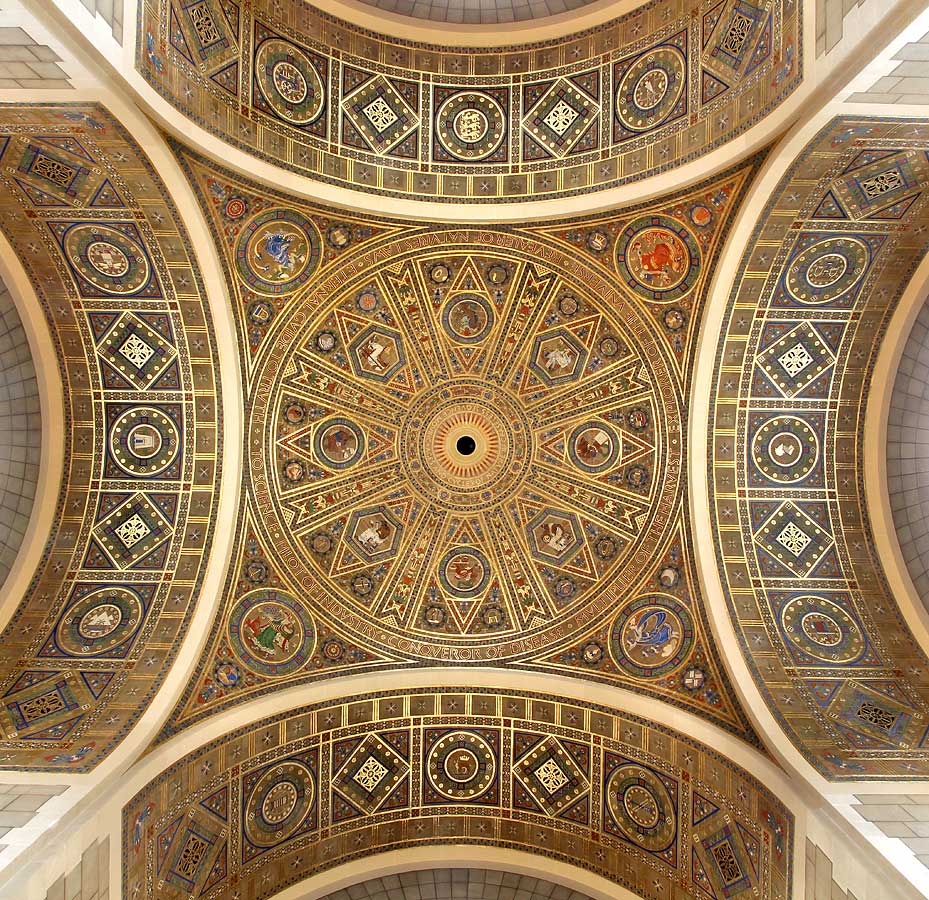
Dome, pendentives and arch soffits of Great Hall in painted and gilded raised gesso
Architect Bertram Grosvenor Goodhue gave Hildreth Meière her first major architectural commission, the decoration of the Great Hall of the National Academy of Sciences.1 She intuitively grasped the collaborative role that Goodhue required. Her job was to enhance his vision of a building by depicting an iconography in visually striking symbols that would convey the building’s purpose and be integral to the architecture.
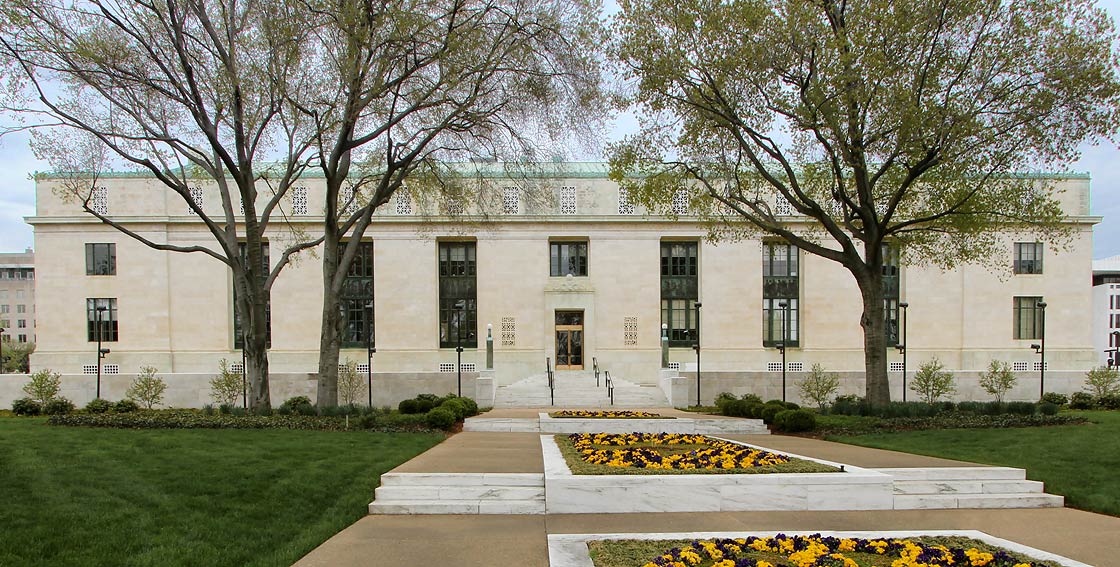
Bertram Grosvenor Goodhue, National Academy of Sciences, 1924
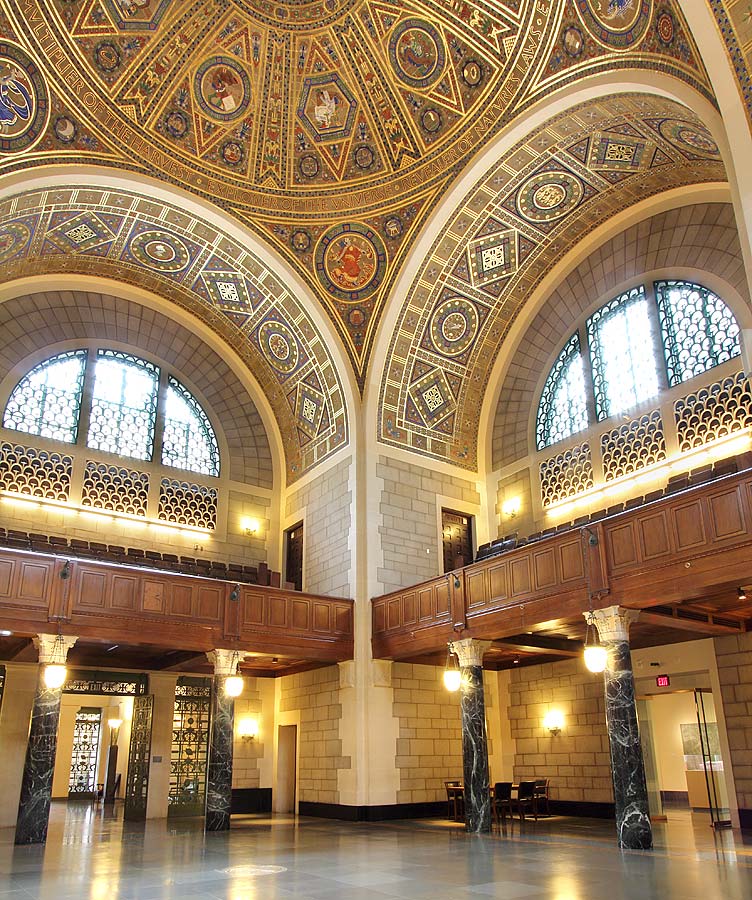
Interior of Great Hall
Goodhue encouraged the young Meière to develop a personal style, suggesting simply that her design should resemble classical Greek vase painting. Meière followed his suggestion:
I copied and traced [Greek vases] until I thought I had the spirit. Then I looked at Egyptian and contemporary art, as their coloring seemed appropriate...Then, disregarding most of my researches, but being influenced by them, I started designing.2
The iconography of the dome is the History of Science as Known in 1922. At the rim of the dome, an inscription reads: “To Science, pilot of industry, conqueror of disease, multiplier of the harvest, explorer of the universe, revealer of nature’s laws, eternal guide to truth.”3
At the center of the dome, Meière depicted the sun surrounded by symbols of the eight planets known at the time.
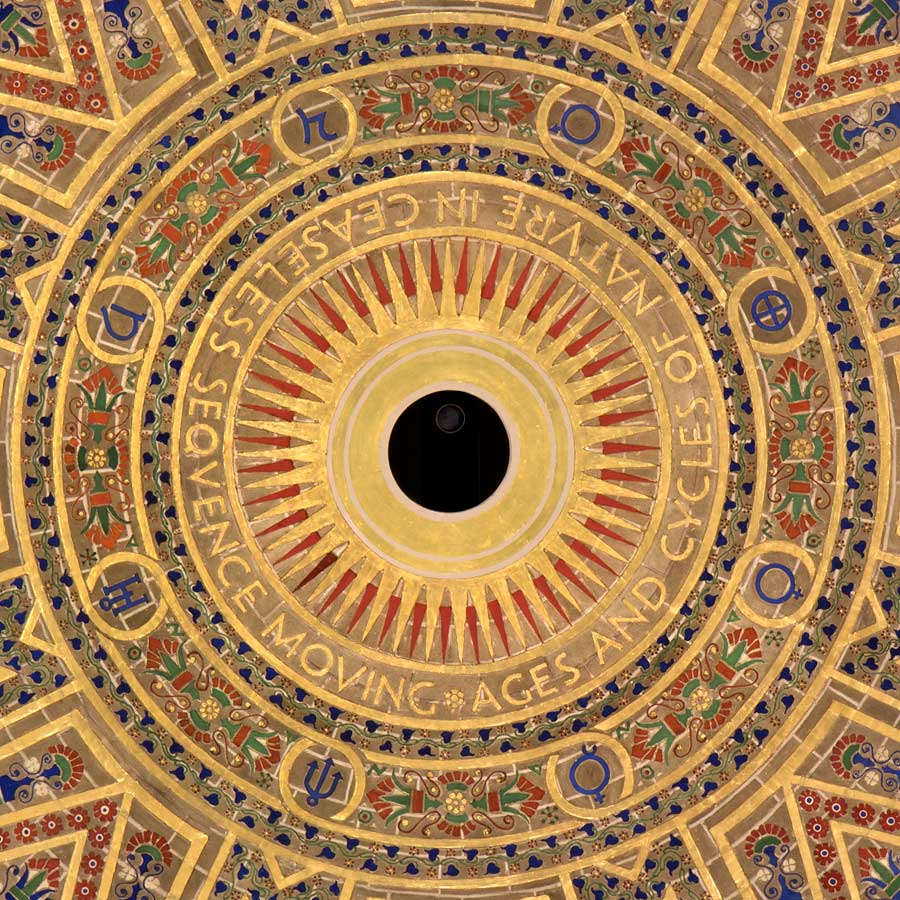
Detail of center of dome
Surrounding the planets are eight allegorical figures, each representing one of the eight branches of science, from astronomy to zoology.
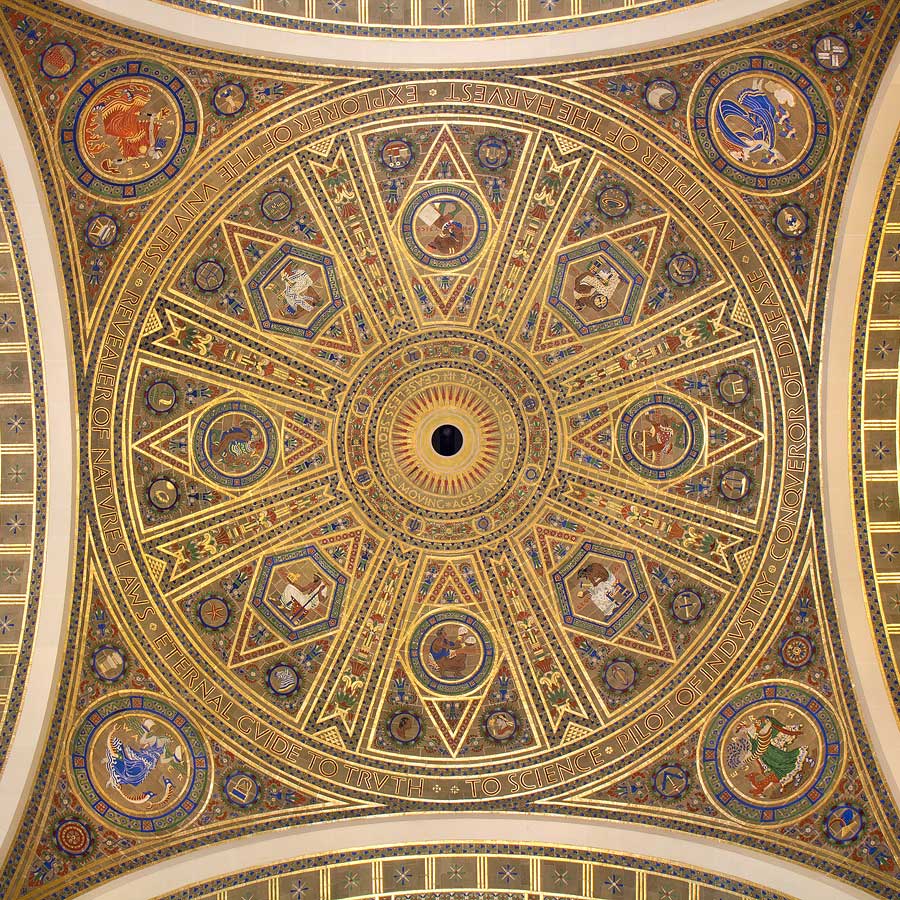
Allegorical figures representing branches of science. Clockwise from top: Physics, Astronomy, Chemistry, Geology, Anthropology, Zoology, Botany, Mathematics
Budgetary restrictions required the National Academy to cover the dome in R. Guastavino’s acoustic plaster instead of acoustic tile. Goodhue proposed executing the design in painted and gilded raised gesso that from a distance would simulate the appearance of colored, glazed ceramic tile set into structural acoustic tile. Meière worked out this inexpensive new medium with the architectural decorating firm Mack, Jenny & Tyler in New York.
Meière’s all-over design gives the appearance of covering the dome’s entire surface, when in fact, her decoration cover less than half, in order to retain the dome’s acoustic properties.
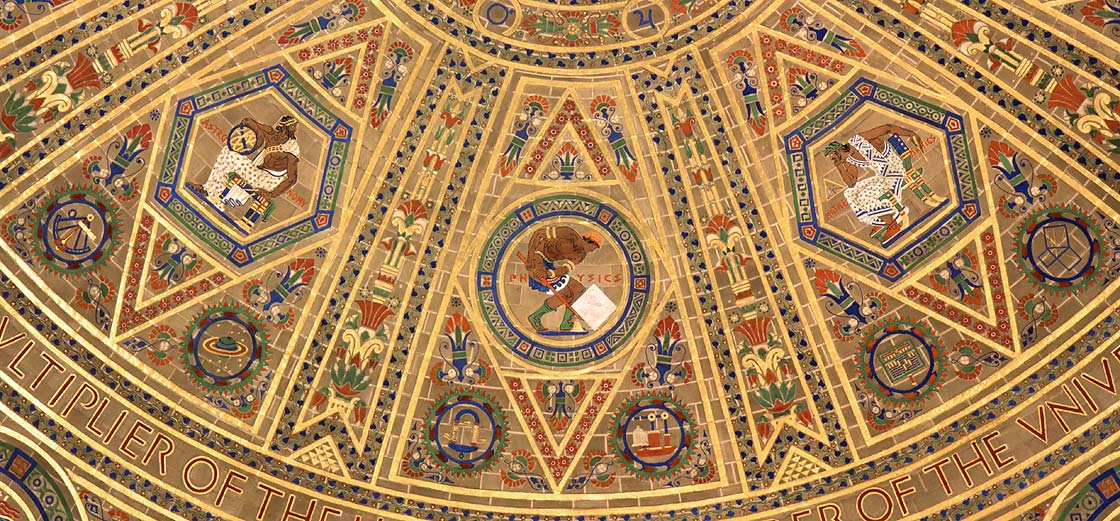
Detail of dome with Astronomy accompanied by sextant, planets, and stars; Physics accompanied by magnet and air pump; and Mathematics accompanied by abacus and diagram of the Pythagorean theorem. All in painted and gilded raised gesso covering only 50% of the acoustic plaster surface.
Meière described her experience working on the Great Hall, her first major architectural commission:
[I] was launched into a world of mathematics where curved surfaces had to be flattened out in the designing, where straight lines were drawn on complicated curves, when ten men worked for three months squeezing the decoration on the brick like icing on a cake, and where I climbed about on a sixty-five-foot scaffolding, mixing paint and wondering in a detached way what it would all look like when finished, the scaffolding down and no possibility of change.4
Goodhue died in April 1924, just days before the dedication of the National Academy. Meière readily acknowledged her debt to him:
Goodhue believed that the great building would result from the architect who had found the right sculptor and the right painter...he had no regular painter, and he said to me when I first worked for him, ‘I’ve been looking for you for years.’ I only did three jobs for him, but the association with him and his ideas were a determining factor in my work and career.5
For a full discussion, see Catherine Coleman Brawer and Kathleen Murphy Skolnik, The Art Deco Murals of Hildreth Meière (New York: Andrea Monfried Editions, 2014): 44-58.
Hildreth Meière, “Distinguished Artist Comes Home for Visit: Miss Hildreth Meière Tells of the Interesting Work in which She Is Engaged,” Women’s City Club Magazine (San Francisco) 1:2 (March 1927): 10.
The descriptions of the iconography of the dome, pendentives, and soffits are taken from The Great Hall at the National Academy of Sciences (Washington, DC: National Academy of Sciences, n.d.).
Hildreth Meière, “Distinguished Artist Comes Home for Visit: Miss HIldreth Meière Tells of the Interesting Work in which She Is Engaged,” Women’s City Club Magazine (San Francisco): 1:2 (March 1927): 10-11.
Meière, letter to Mr. Thompson, May 23, 1936, Hildreth Meière Papers, Archives of American Art, Smithsonian Institution, Washington, DC.
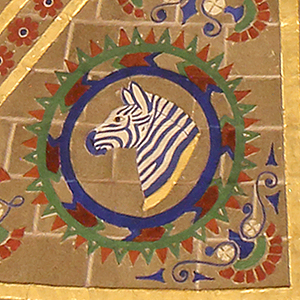
National Academy of Sciences
2101 Constitution Avenue, NW
Washington, DC 20001